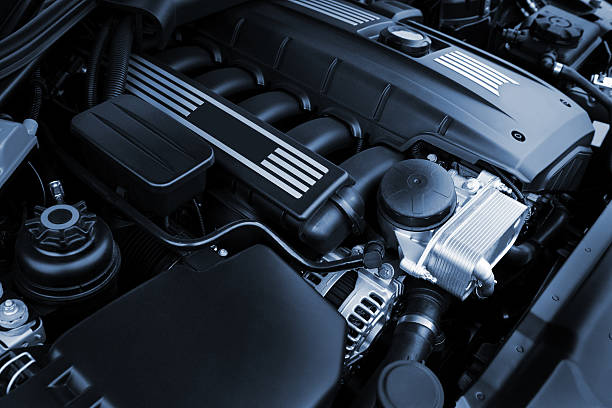The Resurrection of Cylinder Deactivation Technology
Cylinder deactivation, once a forgotten relic of automotive engineering, is making a surprising comeback in the modern era of fuel efficiency and emissions reduction. This innovative technology, which selectively shuts down cylinders during low-load conditions, is finding new life in an unlikely place: high-performance vehicles. As automakers strive to balance power with efficiency, cylinder deactivation is emerging as a key player in the future of internal combustion engines.

The Early Days of Cylinder Deactivation
Cylinder deactivation technology isn’t new; its roots can be traced back to the 1970s when fuel economy became a pressing concern during the oil crisis. General Motors was among the first to experiment with this concept, introducing the ill-fated Cadillac V8-6-4 engine in 1981. This pioneering system aimed to provide V8 power when needed and the efficiency of a six- or four-cylinder engine during cruising.
However, the technology was ahead of its time. Limited computing power and primitive sensors resulted in jerky transitions and reliability issues, leading to a swift market rejection. The concept was shelved, seemingly relegated to the annals of automotive history as a failed experiment.
The Technology Behind Modern Cylinder Deactivation
Fast forward to the 21st century, and cylinder deactivation has undergone a radical transformation. Modern systems leverage advanced electronic control units, sophisticated sensors, and precision engineering to achieve seamless operation. The basic principle remains the same: deactivate cylinders during low-load conditions to reduce fuel consumption and emissions.
In contemporary implementations, solenoids control the oil pressure to the hydraulic lifters of specific cylinders. When deactivation is required, these lifters collapse, preventing the valves from opening. Simultaneously, fuel injection to these cylinders is cut off. The result is a reduction in pumping losses and improved thermal efficiency in the active cylinders.
High-Performance Applications
The resurgence of cylinder deactivation in high-performance vehicles might seem counterintuitive at first glance. After all, isn’t the point of a sports car to use all available power? However, this technology is proving to be a valuable tool in the quest for the best of both worlds: exhilarating performance and improved fuel economy.
Take, for example, the latest generation of American muscle cars. Manufacturers like Chevrolet and Dodge have incorporated cylinder deactivation into their V8 engines, allowing these powerful machines to achieve highway fuel economy figures that were unthinkable a decade ago. When cruising at steady speeds, these engines can operate on just four cylinders, significantly reducing fuel consumption without compromising the ability to unleash full power when needed.
Challenges and Solutions
Implementing cylinder deactivation in high-performance engines presents unique challenges. One of the primary concerns is maintaining the smooth, refined operation that drivers expect, especially in premium vehicles. Engineers have had to develop innovative solutions to address issues such as vibration and noise that can occur when transitioning between full and partial cylinder operation.
Advanced engine mounts, precisely tuned exhaust systems, and sophisticated noise cancellation technology have all played a role in overcoming these hurdles. Additionally, the integration of cylinder deactivation with other technologies like variable valve timing and direct injection has further enhanced its effectiveness and smoothness.
The Future of Cylinder Deactivation
As emission regulations continue to tighten globally, cylinder deactivation is poised to play an increasingly important role in the automotive landscape. Research is ongoing into more advanced forms of the technology, including systems that can deactivate cylinders individually rather than in predefined groups. This would allow for even greater flexibility in managing engine output and efficiency.
Moreover, the technology is beginning to find applications beyond traditional piston engines. Some manufacturers are exploring the use of cylinder deactivation in rotary engines, potentially breathing new life into this unique powertrain design.
Impact on Driving Dynamics and Performance
One of the most intriguing aspects of modern cylinder deactivation is its potential to enhance, rather than detract from, the driving experience. By allowing engines to operate more efficiently during normal driving conditions, this technology can extend the viability of larger displacement engines in an era of increasing environmental consciousness.
For enthusiasts, this means the possibility of enjoying the visceral thrill of a powerful V8 or V12 engine without the guilt associated with poor fuel economy. It’s a compelling proposition that aligns with the growing demand for responsible performance – vehicles that can deliver exhilaration on demand while remaining practical for everyday use.
A New Chapter in Engine Technology
The resurrection of cylinder deactivation technology represents a fascinating chapter in automotive engineering. From its humble and problematic beginnings to its current status as a key enabler of high-performance efficiency, this technology has come full circle. As we look to the future, cylinder deactivation stands as a testament to the ingenuity of automotive engineers and their ability to breathe new life into old ideas.
For car enthusiasts and everyday drivers alike, the implications are significant. The technology promises to extend the lifespan of internal combustion engines, offering a bridge between the high-performance cars we love and the efficient, environmentally conscious vehicles we need. As cylinder deactivation continues to evolve, it may well play a crucial role in shaping the future of automotive performance, proving that sometimes, less really can be more.





